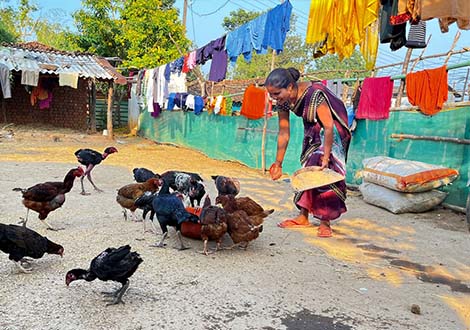That’s How It Is At 30,000 kms!
by Mohini Saha, Narharpur, Chhattisgarh
You remember my first story Heroes on Wheels? It’s absolutely fine if you don’t – the link is here https://www.pradan.net/heroes-on-wheels/. That time it was my scooty who narrated my journey on my behalf This time it’s me who is going to share a lovely journey of one of the most inspiring women farmers I work with. Yogeshwari Tekam.
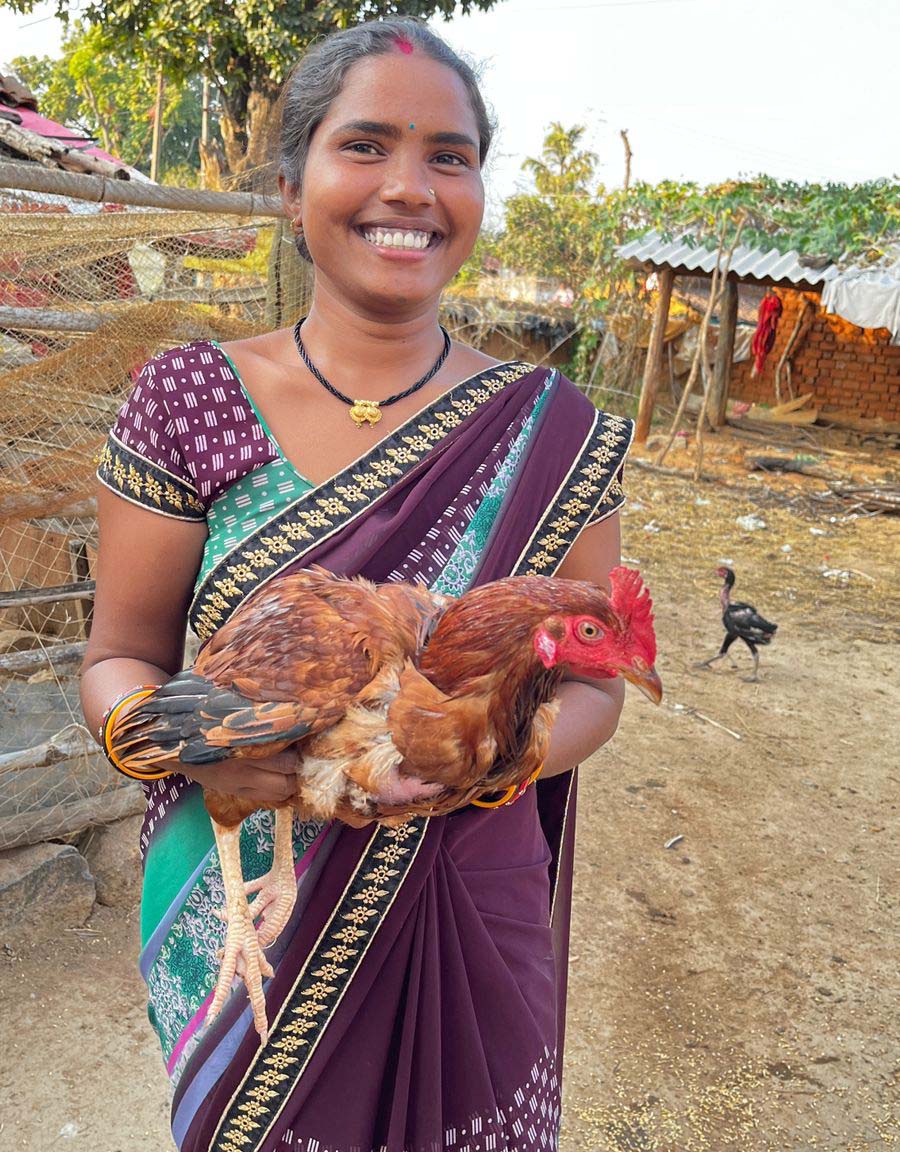
Yogeshwari Tekam. Photo: Shubham Sen
“2019. A debt of Rs. 50,000 ruined my peace. I didn’t take it from any money-lender, rather I took it from my village organisation (VO). The peer pressure to repay the loan in monthly instalments was increasing every day. Be it at my home, or at my farm, or the SHG meetings, I was losing my confidence everywhere. Naresh and tried with all our might to pay the monthly instalments, but our business didn’t take off and we lost all the money. On the other hand, two consecutive years there was no rain – and we couldn’t grow enough crops to sell and repay the loan. At times I felt like fleeing from this village. But where?” shares Yogeshwari recalling those harrowing times of extreme uncertainty.
Yogeshwari and Naresh Tekam own five acres land. Irrigation was non-existent and they were left to depend on the mercy of monsoon to grow paddy – for their staple food. Yogeshwari wasn’t unique. Farmers of Gavarsilli village, of Narharpur block of Uttar Bastar Kanker in Chhattisgarh with whom I work, were undergoing very similar circumstances in their daily lives. Earning handsome cash income by growing crops, that too with dignity and pride, was something that barely anyone at Gavarsilli could ever manage. Rs. 50,000 unpaid debt was a crushing burden for all the members of the VO.
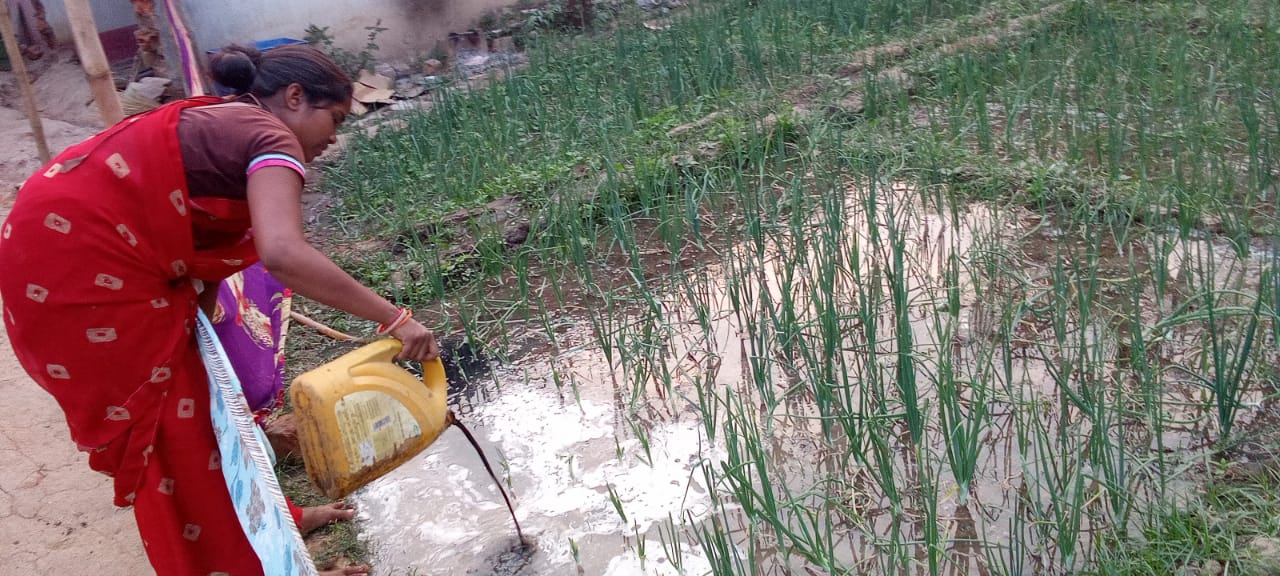
Yogeshwari at her farm. Photo: Bholaram Vishwakarma
The year 2020 saw the initiation of High Impact Mega Watershed Programme, supported by Government of Chhattisgarh, and project ‘Parivartan’ by HDFC Bank Ltd in Gavarsilli. I started organisaing series of workshops, video shows, and orientation visits for the farmers around various models of land and water conservation for protected irrigation and increased irrigation leading to multiple opportunities of cash income for smallholder farmers. Yogeshwari, though shy, but was always an active, energetic participant in most of the events with eagerness to learn more.
“Naresh barely helped me in household or farm related work, he never restricted me from participating in sessions which would help me in developing new skills or adding knowledge”, claimed Yogeshwari.
I think both these projects actually opened new vistas of opportunities for Yogaeshwari. I took her to Kanker where she saw how rearing indigenous variety of poultry like Kadaknath, and pisciculture in farm-ponds help farmers earn good returns with minimum investment and lower risk.
“I saw with my own eyes how Kadaknath chicken are reared, how they are vaccinated, and fed, and most interesting of all, doing backyard poultry along with fish and duck rearing. I could never think of doing so many cash- remunerative interventions at such a small piece of land in a short span of time and involving less labour” recalls Yogeshwari.
I was engaging with village communities to establish backyard poultry model including vaccination through Pashu Sakhis or Para-veterinarians. Of course, promotion of Kadaknath and other improved breeds such as Vanraja, RIR was in my focus too. During the planning processes, Yogeshwari fumbled a lot, and used to call me day and night to discuss how would she manage to mobilise finances to kick-start poultry rearing?
Maybe due to my repeated reassurance, or just because of her inner calling, that Yogeshwari decided to take another loan of Rs. 12000, this time from her Om Shakti SHG. She used the money to purchase 100 Kadaknath and 70 Vanraja chicks. Starting with managing shed space, feeding, deworming, to vaccination, Yogeshwari took meticulous care of each and every chick. Four months passed. The chicks grew and gained the right weight. She started selling her birds and just within six months she sold her entire stock, earning 40,000/- apart from consuming 20 birds in her house.
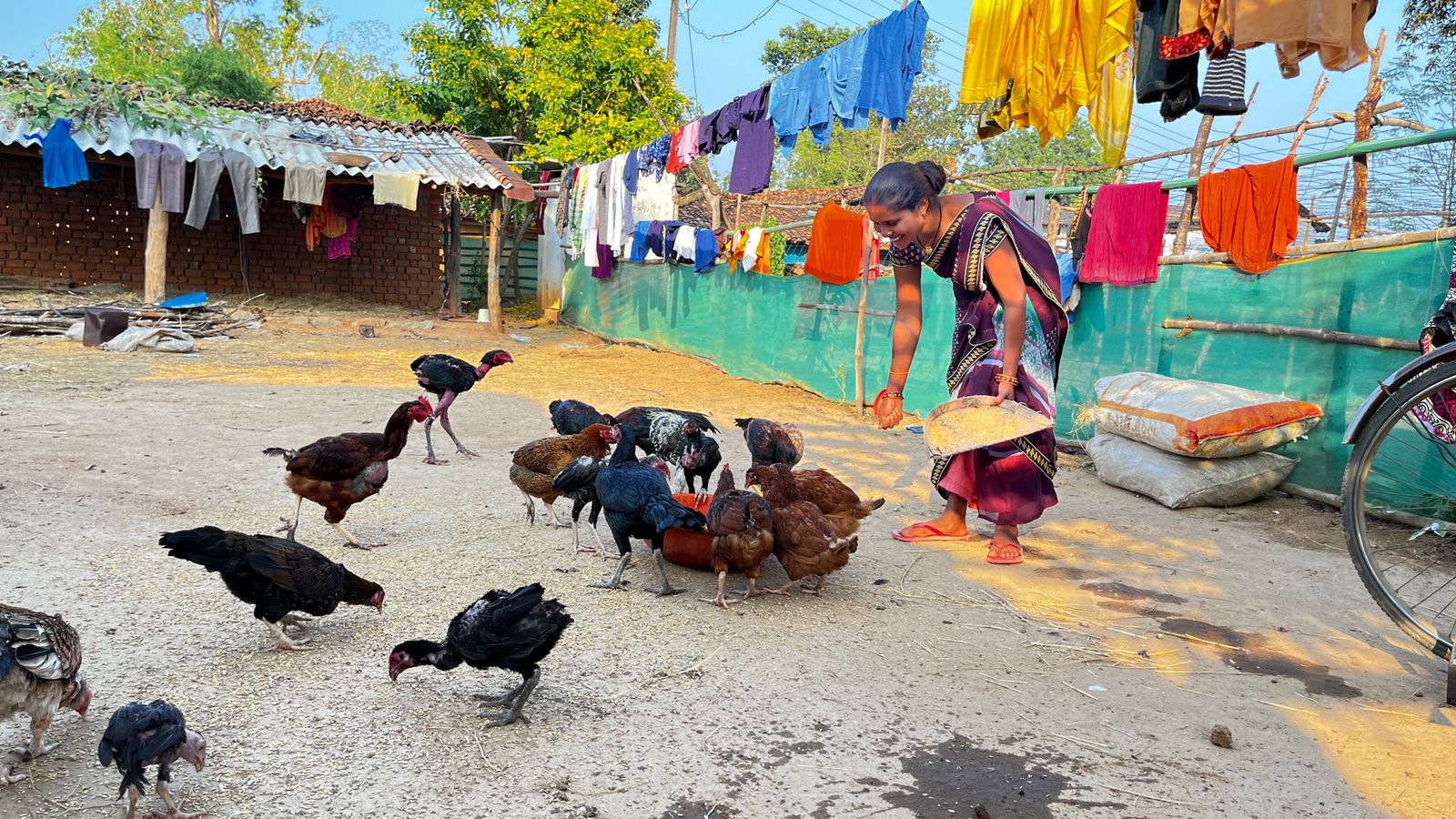
Yogeshwari managing her poultry. Photo: Shubham Sen
This income boosted her confidence and out of the total outstanding loan amount, she repaid Rs. 30,000 to her VO. I still remember the radiant smile on Yogeshwari’s face the next day I met her. “Didi, I have successfully returned 30,000 – see, I am not a defaulter anymore!”
By 2021, Yogeshwari had got a farm pond constructed on her land, where she started rearing fish and duck. With undeterred zest, she took care of the pond by applying poultry waste, cow dung, and lime in it. Yogeshwari sold some of the grown-up fishes and earned Rs. 7000/- in the very first year and earned Rs. 15,000 by selling a few of the ducks. And it was because of the pond that Naresh and Yogeshwari harvested a surplus paddy of 15 quintals the next monsoon. The profit margin from paddy was higher this time as they stopped purchasing chemical fertiliser and pesticides and switched to organic inputs, at almost zero cost.
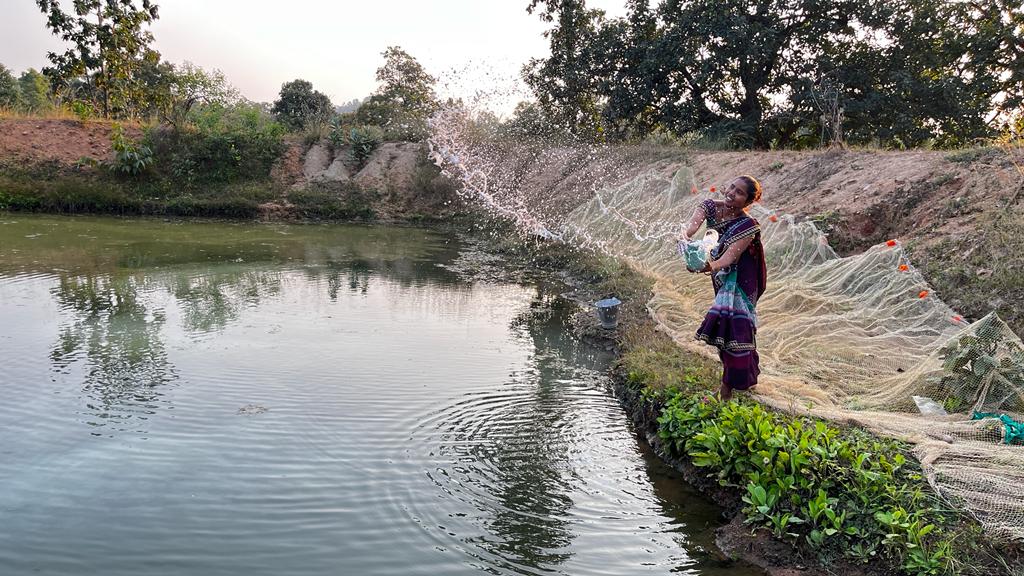
Feeding the fishes. Photo: Shubham Sen
And what a relief! Her family repaid the complete debt amount and even earned a good surplus to reinvest. She constructed a poultry shed so that she can continue rearing ducks and birds and maintain a good herd size.
“I am confident now. I am very happy with my poultry, duck and fish rearing model. I am a foodie, and since the past 2 years I have been devouring fish and chicken like never before!”, added Yogeshwari.
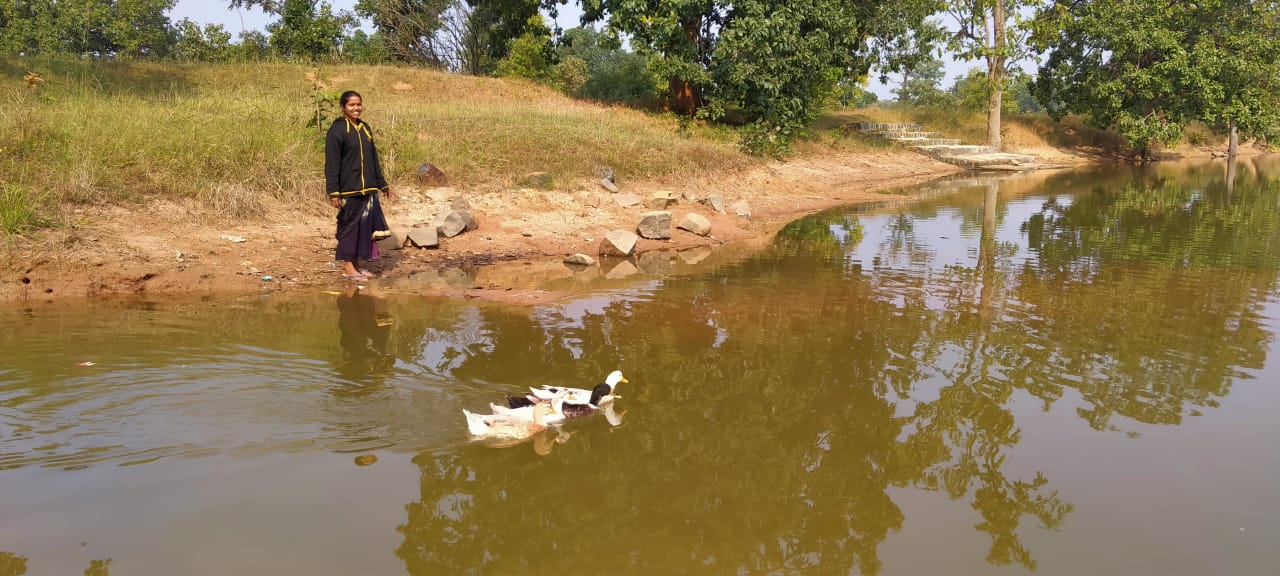
The ducks Yogeshwari rears. Photo: Shubham Sen
And today, when upon visiting Gavarsilli I see Yogeshwari busy renovating her house with brick and cement, it gives me a different high! Her confidence and calculated risk-taking abilities have made her a role model for all other Gavarsilli villagers.
When I wrote my first story, I had travelled 3000 kms, and now my scooty dashboard shows 30,000! My experience has only strengthened my faith in integrated natural resource management as a great solution to boost rural economy as it promotes agro-ecological practices, climate resilient farming and diversification of livelihood basket that minimises risk and enhances income and overall well-being.
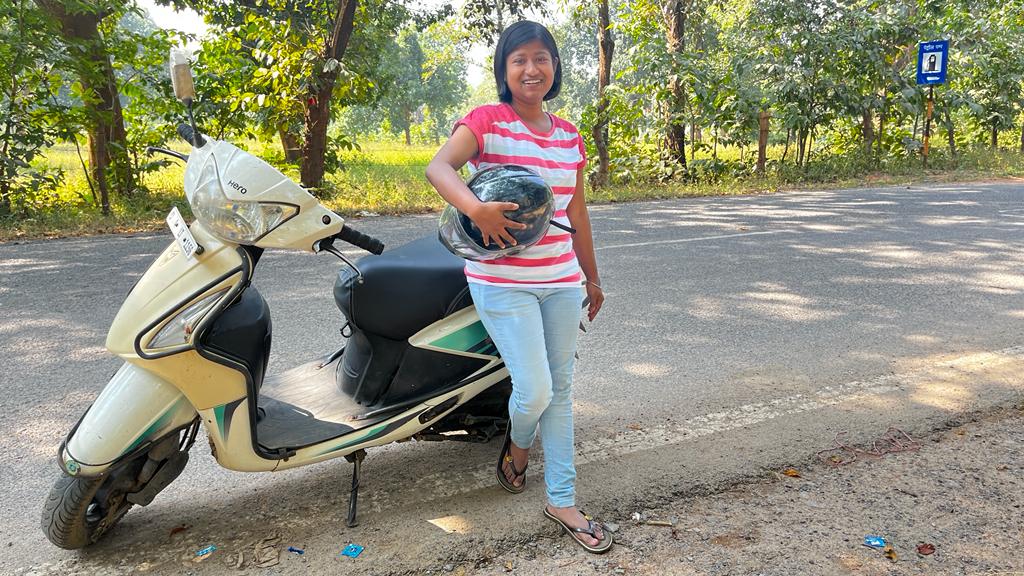
With my scooty. Thanks to Shubham for this click
Special inputs: Souparno Chatterjee, New Delhi


